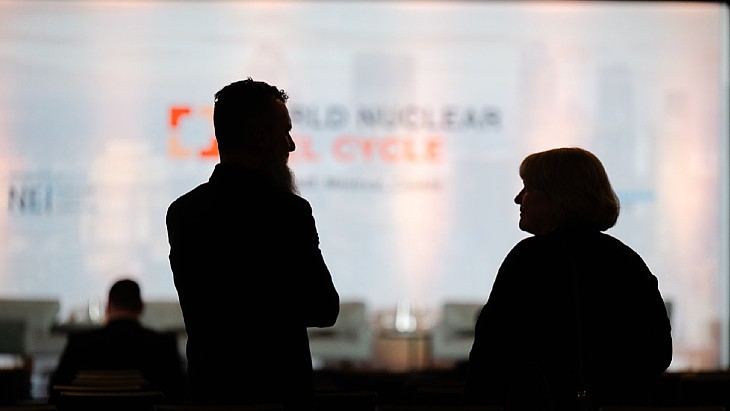Santa Quitéria project accepted for environmental review
.jpg)
In September 2020, the government of Brazil's northeast state of Ceará and the Santa Quitéria Consortium signed a Memorandum of Understanding for the construction of a uranium and phosphate extraction plant in Itataia. The consortium is a partnership between fuel cycle company Indústrias Nucleares do Brasil (INB) and fertiliser producer Galvani.
The acceptance of the EIA/RIMA of the project by IBAMA - a federal agency under the Ministry of Environment - was welcomed by INB. It said: "This is an important step in the licensing process, as it checks whether the content of the document complies with the Terms of Reference stipulated by the agency and, therefore, will be submitted to technical analysis."
Following this acceptance by IBAMA, there will be a period of 60 days for a public hearing to be held, at which time aspects of the project will be clarified and suggestions, questions and criticisms from society will be collected. These hearings are expected to be held in May.
INB said the distribution of digital copies of the EIA and printed copies of the RIMA began this week to bodies and institutions determined by IBAMA, including the municipalities of Santa Quitéria and Itatira, the Government of the State of Ceará and the Secretary of the Environment of Ceará. In addition, a team with representatives from INB and Galvani is in Ceará to make institutional visits.
"The environmental licensing process is in three stages," noted INB chemical engineer Alessandra Barreto. "Now, we are in the process of obtaining the preliminary license. Then, it's time for the installation license followed by the operating license. These licenses have to be in step with the nuclear licensing, as this is an enterprise in which we are going to produce uranium concentrate."
The Itataia deposit is the largest discovered uranium reserve in Brazil. An estimated 142,200 tonnes of uranium is inter-mixed with phosphates. The deposit has exploitable reserves of 79.5 million tonnes of ore, at grades of 11% P2O5 and 0.0998% U3O8, equating to about 8.9 million tonnes of P2O5 and 79.3 thousand tonnes of U3O8.
The Santa Quitéria Consortium - formed in June 2008 - will initially invest USD400-450 million in the Itataia facility, the operation of which is expected to begin in 2023, with full capacity being reached in 2026. The project is expected to generate up to 2500 jobs, of which 500 will be direct. The life of the deposit is estimated at 30 years.
The facility is planned to produce 2300 tonnes of uranium concentrate per year as a by-product of 240,000 tonnes of P2O5. The phosphates extracted would be used by Galvani for the manufacture of fertilisers and animal feed, while INB will use the uranium by-product for the production of uranium concentrate for nuclear fuel.
Earlier this month, a ceremony was held to mark the launch of Brazil's National Fertiliser Plan 2022-2050, which took place at Palácio do Planalto, in Brasília. Prepared by the Federal Government, the plan includes measures for the next 28 years focused on reducing the current dependence of Brazilian rural producers on imported fertilisers and increasing national production. The Santa Quitéria project, which is included in the plan, will contribute in this regard by producing the equivalent of 25% of the demand for phosphate fertilisers in the country's north and northeast regions.
_49098.jpg)
_57190.jpg)
_70526.jpg)
_75453.jpg)






_50521.jpg)

